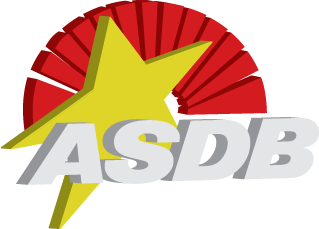Support Services
All ASDB students have access to communication support services when needed for:
- accessing their education
- improving social and interpersonal interactions
- preparing for life after graduation
- auditory skills development
- articulation
- global language and concept development
- phonological/phonemic awareness and phonics
- pragmatics and conversational skills
- fluency-related disorders
- augmentative/alternative symbols and devices
Augmentative-Alternative Communication
Augmentative-Alternative Communication (AAC) is an important part of the overall communication program at ASDB. The American Speech and Hearing Association’s (ASHA) definition of an AAC system is “an integrated group of components, including the symbols, aids, strategies and techniques used by individuals to enhance communication.” A range of high- and low-technology AAC systems can be used across school, community, and vocational settings to accommodate a variety of language and motor needs. Educational teams at ASDB can implement an individual’s current AAC system into the curriculum or work to develop new AAC systems to maximize overall independence and academic skills.
Language and Communication Development
ASDB values language fluency and efficient, effective communication for all students.
Students who are deaf or hard of hearing enter school at ASDB at various ages and with varying levels of American Sign Language and English proficiency. Campus programs offer the opportunity for immersion in a language-rich ASL environment. Students who are still developing ASL language skills may receive individual or group instruction from an ASL teacher.
Written English literacy is an integral part of all instruction at ASDB. Additionally, spoken English development is a key component of the educational plan, depending on individual student needs and abilities.
Spoken English support services occur individually or in small groups. Sessions may take place within the classroom, in the communication lab, or in functional community settings. Classroom content and other developmentally appropriate materials are incorporated when working on specific communication and language goals.
